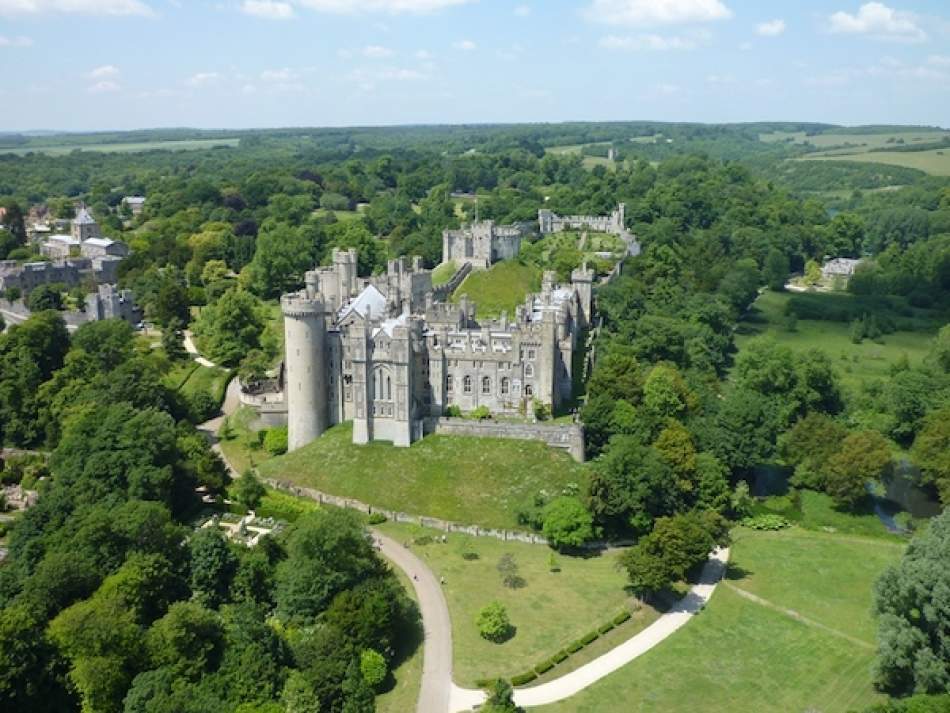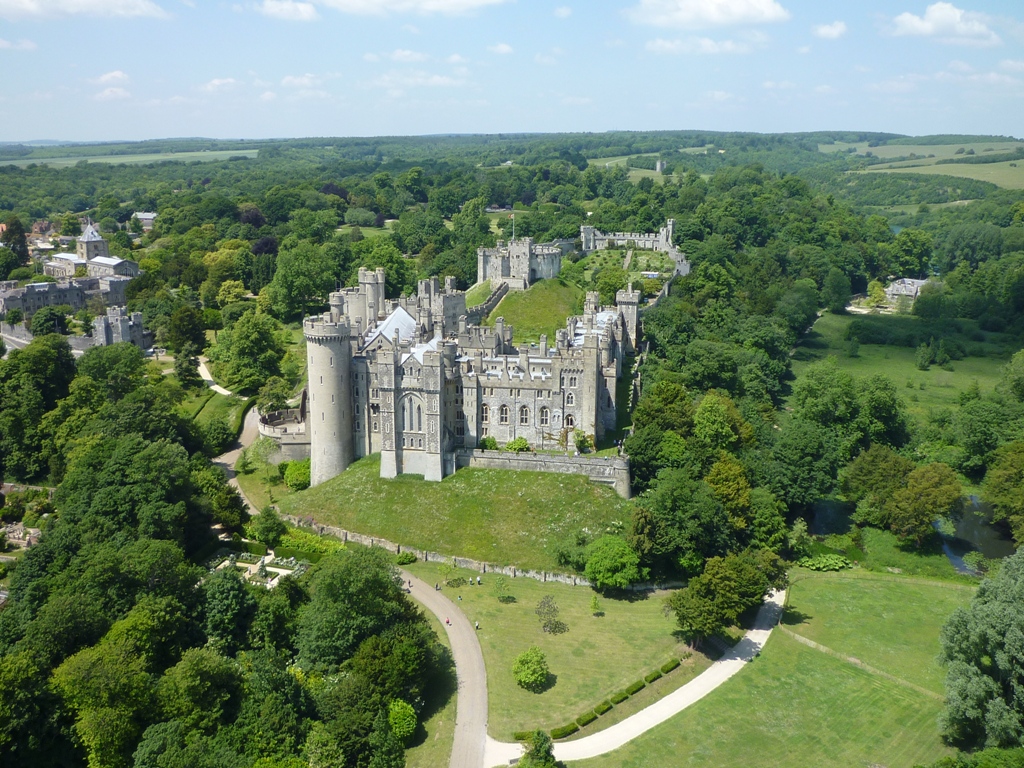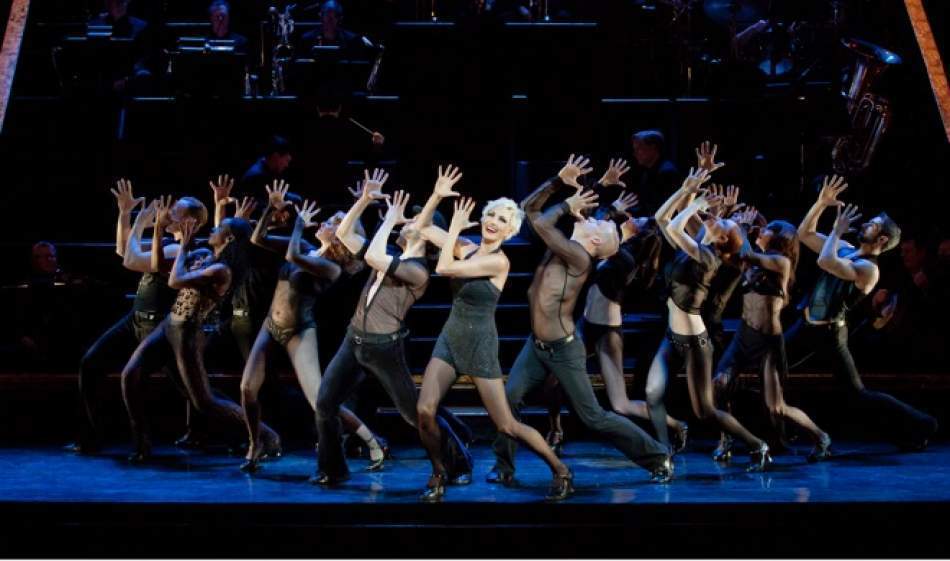Arundel Castle, 1000 years between history and Shakespeare: the interview
Daily / Interview - 23 July 2018
The Arundel castle is one of the oldest in Britain: Stephen Manion is Castle Manager.

Q. When was Arundel Castle built and by whom?
A. Arundel Castle in West Sussex, one of the largest inhabited and complete castles in England, is this year celebrating the 950th anniversary of its initial construction. Built at the end of the 11th century by Roger de Montgomery, Earl of Arundel, the oldest feature is the motte, constructed in 1068, followed by the gatehouse in 1070. Throughout its near-millennium in existence, the Castle has gone through many changes from its origins as a defensive fort to a ruin in the 17th century, before finally becoming the stately home it is today.
In fact, Arundel Castle has been involved in every major historical moment in the UK, including the English Civil War and both World Wars. The Castle has also played a vital role in local history, with many notable moments during the past 950 years, such as when the Fitzalan Chapel was declared as a separate independent ecclesiastical structure from the parish church by Lord Chief Justice Coleridge in 1879. The Chapel is still divided from the parish church by a glass partition, an unusual, if not unique, occurrence in England.
Q. How many rooms do you have? What are the most interesting rooms to visit?
A. The finely preserved Castle rooms include the Baron’s Hall, 14th Century Catholic Fitzalan Chapel, Regency Library and Victorian bedrooms alongside the Norman Motte and Keep. The Collector Earl’s Garden which was conceived by the Duchess of Norfolk, is this year celebrating its tenth anniversary, having been opened by HRH The Prince of Wales in 2008.
Look at the Gallery: Arundel Castle
Q. Is there any legend or mystery linked to the Castle?
A. Arundel Castle has descended directly from 1138 to the present day, carried by female heiresses from the d'Albinis to the Fitzalans in the 13th century and then from the Fitzalans to the Howards in the 16th century. It has been the seat of the Dukes of Norfolk and their ancestors for over 850 years.
During the Civil War (1642-45), the Castle was badly damaged when it was twice besieged, first by Royalists who took control, then by Cromwell's Parliamentarian force led by William Waller. Nothing was done to rectify the damage until about 1718 when Thomas, the 8th Duke of Norfolk (1683-1732) carried out some repairs. Charles Howard, the 11th Duke (1746-1815), known to posterity as the 'Drunken Duke' and friend of the Prince Regent subsequently carried out further restoration.
Queen Victoria (1819-1901) came from Osborne House with her husband, Prince Albert, for three days in 1846, for which the bedroom and library furniture were specially commissioned and made by a leading London furniture designer. Her portrait by William Fowler was also specially commissioned by the 13th Duke in 1843.
The building we see now owes much to Henry, 15th Duke of Norfolk (1847-1917) and the restoration project was completed in 1900. It was one of the first English country houses to be fitted with electric light, integral firefighting equipment, service lifts and central heating. The gravity fed domestic water supply also supplied the town. Electricity cost over £36,000 to install, but the splendidly carved chimneypiece in the Drawing Room only cost £150!
Q. Please explain more about the tournaments in July.
A. The Castle is hosting two events in July, the Norman Knight’s Tournament on 14-15th July, and the highlight of the year, the International Jousting and Medieval Tournament on 24-29th July.
The Norman Knight’s Tournament is a warm-up to the Jousting and Medieval Tournament and includes a tournament of foot combat, set beneath the 12th century Keep. A tented encampment will include a variety of crafts and demonstrations from the period, a falconry display, have-a-go archery (for over 8s) and a story teller.
On 24-29 July, the Castle will host the 10th annual International Jousting and Medieval Tournament: Champion of Champions Edition, the world’s longest jousting tournament of its kind. The grounds will transform with a tented medieval encampment for an action-packed living history spectacular, with professional jousters representing England, Germany, Norway and Poland. The highlight of the Castle’s open season, the event promises nothing less than a true clash of the titans with plenty of fierce rivalries along the way. The world’s finest jousters will demonstrate their brawn and bravery as they vie for glory – charging at each other atop specially trained horses, clad in full plate armour and wielding lances. Aside from the tension of the tilt-rail, the historical and sporting spectacular will also keep spectators on the edge of their seats with a series of thrilling hand-to-hand combat challenges and hunting skills contests.
A fantastic family day out, festivities also include have-a-go archery, falconry displays, face painting, arts and crafts and storytelling against the backdrop of the stunning grounds and ancient Castle.
Q. What is the biggest curiosity that attracts tourists? Are there any routes that tourists can perform?
A. Aside from the many historical interpretation events at the Castle, visitors can also enjoy its beautiful gardens. The Collector Earl’s Garden is an installation conceived as a tribute to Thomas Howard, 14th Earl of Arundel who was known as The Collector. Martin Duncan, Head Gardener at Arundel Castle, has received one of the highest accolades in the gardening world - this years’ Kew Guild Medal. Outside of the Castle itself, the impressive 11th Century Motte and Keep offers breath-taking panoramic views across Arundel, the nearby River Arun and the South Downs.
Arundel Castle offers a full day out with guided and free-flow tours. For groups of at least 20, guided tours can be arranged during the morning before the state rooms are open to visitors (10.30 to 11.45), and at other times by application in advance.
© All right Reserved













